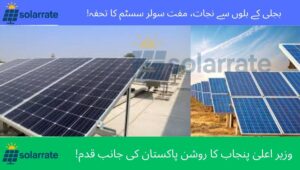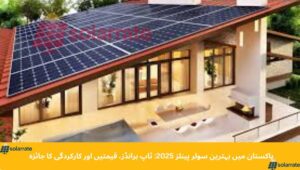A What is a Solar Inverter turns the DC electricity from your panels into AC power that actually runs your fridge, lights, laptop—or anything plugged in.
Without a What is a Solar Inverter, your solar setup is just generating power it can’t use. Solar inverters also include MPPT, which maximizes your energy harvest by adjusting to real-time conditions .
A What is a Solar Inverter ensures your system safely connects to the grid. It matches voltage, frequency, and phase, and includes anti‑islanding protection to prevent power from flowing back during outages.
A What is a Solar Inverter comes in different types depending on your setup. You’ll find stand‑alone (off‑grid), grid‑tie, hybrid (battery‑ready), and central/string systems.
Understanding What is a Solar Inverter is crucial—it does the heavy lifting behind the scenes. It converts, optimizes, protects, and connects. Without the right inverter, your panels are collecting energy that never reaches usable appliances.
Visit Now:https://cmsolarscheme.punjab.gov.pk/

What Is a Solar Inverter?
🔌 A What is a Solar Inverter converts the DC electricity from your solar panels into AC electricity so your fridge, lights, laptop, and other appliances can run smoothly. It’s the critical bridge between your solar panels and your home’s electrical system.
🔋 In smaller portable units like the EcoFlow power stations, the inverter is integrated inside. In larger home setups, a separate What is a Solar Inverter box handles this conversion. The EcoFlow DELTA Pro Ultra can even support multiple inverters—up to three—to deliver 21.6 kW of AC output and accept 16.8 kW of solar charging from 42 panels.
⚡ In hybrid or off-grid systems, a solar charge controller directs the DC power flow—sending it either to batteries or into the What is a Solar Inverter for immediate use.
🛠️ A What is a Solar Inverter also ensures safe grid interaction, stable voltage and frequency matching, and enables efficient solar charging and energy management even during outages.
In short, a What is a Solar Inverter is the unsung hero behind every solar system, enabling your panels to power everyday life.
EcoFlow DELTA Pro Ultra
🔋 What is a Solar Inverter? The EcoFlow DELTA Pro Ultra is the ultimate What is a Solar Inverter integrated system, letting you seamlessly run your whole home off-grid, even during extended blackouts.
Never fear blackouts with up to 1 month of power (expandable from 6 kWh to 90 kWh battery capacity) and 21.6 kW of AC output (7.2 kW per unit, scalable to 21.6 kW when using three inverters) .
With What is a Solar Inverter built in, this system offers 0‑ms seamless transfer to backup power (Online UPS), whisper-quiet operation under light load, and solar recharging capabilities—just one hour of sun gives one full day of power (5.6–16.8 kW solar input) .
⚡ Run your entire home—lights, fridge, HVAC, EV charger—off-grid for weeks at a time. The What is a Solar Inverter here isn’t just a box: it’s the heart of your power independence.
How Does a Solar Inverter Work?
🔧 A solar inverter uses solid-state components—namely transistors and diodes—to convert DC electricity from PV modules into AC electricity suitable for homes and the grid. Unlike bulky mechanical inverters, modern solar inverters have no moving parts; they rely on high-frequency switching of semiconductors to alternate current simply and efficiently
⚡ In operation, the inverter rapidly switches the DC on and off at high frequency using components like IGBTs or MOSFETs. This creates a pulsed waveform that’s then filtered into a pure sine wave—the cleanest AC format—minimizing harmonics and ensuring safe, noise-free power for sensitive electronics
🔌 The result is pure sine waveform AC—the gold standard for power quality. It closely matches grid electricity, avoids distortion, and protects appliances from the interference and stress produced by inferior inverter waveforms .
In summary, solar inverters use solid-state switching to rapidly toggle DC, shaping it into clean AC that’s safe and efficient—without motors or mechanical parts.
Types of Solar Inverters:
There are numerous types of solar inverters available today.
Also Read:Affordable Solar Panel Prices in Pakistan 2025 – Complete Rate List with Brand Comparison and Installation Costs
| Inverter Type | Ideal For | How It Works | Key Advantages | Main Limitations |
|---|---|---|---|---|
| ⚡ String Inverter | Residential & small commercial systems | Multiple panels (a “string”) connect to one central inverter | Low cost, easy installation, up to 98% efficiency . | One shaded/failed panel affects all, limited panel-level monitoring |
| 🔋 Microinverter | Rooftops with shading or multiple orientations | One small inverter per panel converts DC to AC individually | Independent panel operation, better for partial shading, panel-level monitoring | Higher upfront cost, more complex maintenance |
| 🏢 Central Inverter | Large commercial and utility-scale systems | Multiple panel strings feed one high-capacity inverter | Scalable, cost-efficient at scale, centralized management | Not suitable for small homes, less flexible, shading affects whole string |
| 🔄 Hybrid Inverter | Homes with battery backup + grid connection | Converts solar DC to AC and manages energy flow between solar, battery, and grid | Supports grid-tied and off-grid use, backup power during outages, smart energy management | More expensive, setup complexity higher |
How to Choose?
🔧 Choosing the right What is a Solar Inverter depends entirely on your roof, budget, and energy goals.
If your roof has no shading and all panels face the same direction, a What is a Solar Inverter in the form of a string inverter is the most affordable and efficient option—simple, proven, and low-maintenance.
🌳 When your roof has multiple tilt angles or partial shade during the day, opting for microinverters makes more sense. With each panel working independently thanks to a What is a Solar Inverter, shading on one panel won’t drag down the output of others.
🏢 For large-scale installations like solar farms or commercial buildings, a central What is a Solar Inverter (central inverter) efficiently handles many panels and simplifies system management.
🔋 If you want energy storage and blackout protection, a hybrid What is a Solar Inverter is key—connecting solar, battery, and grid, it allows you to store excess power and use it day or night.
Each scenario hinges on What is a Solar Inverter delivering DC-to-AC conversion, but the type you choose shapes efficiency, resilience, and future expandability.
Also Read:Solar Panel Installation Guide 2025 – From Planning to Powering Your House
Grid-Tied Solar Inverters
In a grid-tied system, DC electricity from photovoltaic modules like solar panels is transmitted through cables directly to a solar inverter. The solar inverter converts DC to AC electricity for consumption in your home and transmission to the utility grid.
Off-Grid Solar Inverters
![]() Off-grid solar power systems use solar batteries to store electricity to solve the problem of intermittency.
Off-grid solar power systems use solar batteries to store electricity to solve the problem of intermittency.
![]() Because off-grid systems operate independently of the utility grid, electricity must be stored for use at night or at other times when your household consumes more power than your solar panels produce.
Because off-grid systems operate independently of the utility grid, electricity must be stored for use at night or at other times when your household consumes more power than your solar panels produce.
![]() In an off-grid system, solar panels transmit DC electricity to a solar charge controller, which distributes power to a solar battery or solar inverter, depending on whether the priority is consumption or storage.
In an off-grid system, solar panels transmit DC electricity to a solar charge controller, which distributes power to a solar battery or solar inverter, depending on whether the priority is consumption or storage.
![]() However, many off-grid systems can only be charged using solar panels and don’t give you the option to auto-switch between utility or fossil fuel generator power.
However, many off-grid systems can only be charged using solar panels and don’t give you the option to auto-switch between utility or fossil fuel generator power.
Also Read:Top 10 Best Solar Panels in Pakistan – Top Brands & Prices
Conclusion:
In conclusion, selecting the right solar inverter is crucial for maximizing the efficiency and performance of your solar panel system. By understanding the different types of inverters, such as string inverters, microinverters, and hybrid inverters, you can make an informed decision that suits your specific energy needs. Consider factors like power rating, efficiency, monitoring capabilities, and compatibility when choosing a solar inverter. With the right inverter, you can optimize your solar energy system, reduce energy bills, and contribute to a sustainable future.
FAQS:
Q: What is the lifespan of a solar inverter?
The average lifespan of a solar inverter is around 10-15 years, although some high-quality inverters can last up to 20 years or more.
Q: Can I use a solar inverter without batteries?
Yes, you can use a grid-tie solar inverter without batteries, which directly feeds electricity into the grid. However, if you want to store excess energy for later use, batteries are necessary.
Q: How efficient are solar inverters?
Modern solar inverters have high efficiency rates, typically ranging from 95% to 98%. This means that only 2-5% of the energy generated by your solar panels is lost during conversion.
Q: Do solar inverters require maintenance?
Solar inverters generally require minimal maintenance, such as regular software updates and ensuring proper ventilation. However, it’s recommended to have a professional inspect the system every 5-10 years to ensure optimal performance.




